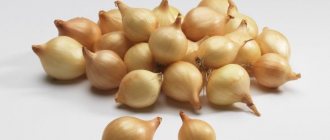The dwarf tulip is a beautifully flowering perennial, bulbous, herbaceous plant belonging to the genus Tulip from the Liliaceae family. In some sources it may be called short or stunted. The prevalence of natural species is wide, but flower growers spoiled by beauty are more often interested in hybrid varieties. Species specimens are less popular in floriculture and are rarely used to create landscape designs. Difficulties when growing plants in personal plots arise quite rarely; they are completely unpretentious, regularly delighting with flowering, subject to the basic rules of agricultural technology.
Botanical features and description
https://img0.liveinternet.ru/images/attach/d/0/141/449/141449046_4920201_8354800BAKI_20130308090843
Dwarf tulips are a wide variety of flowers native to high mountain regions. The plant is small in size, reaching a height of 10–12 cm; the bulbs are oval, covered with golden-brown scales, no more than 2 cm in diameter. At the base of the underground part there are fringed hairs, which are a distinctive feature of the variety and a clear identification feature.
The leafy part has a linear shape, separated from the stem at the base. At the time of development, up to 3 leaf plates of a rich green hue with a slightly wavy edge are formed on the crop. As the culture ages, the surface of the leaf becomes emerald and a silvery tint appears on it. A burgundy border may appear on the leafy part; according to botanists, this is the result of contact of the crop with direct sunlight.
Dwarf tulips are prized for their exquisite blooms. Their buds have a simple structure, but they are valued precisely for their sophistication. They resemble crocuses in appearance, blooming in early spring. A striking star-shaped pattern is formed when the flower blooms, with petals with a pointed edge and contrasting spots in the center. The different colors of the stamens are a distinctive feature of the genus.
https://avatars.mds.yandex.net/get-zen_doc/50509/pub_5aa415ab9d5cb3d31b90a0ad_5aa415ec57906a2de7dce453/scale_1200
Flowering begins with the arrival of warming, it often occurs from late April to early May. Lasts approximately 2 weeks. Some hybrid varieties bloom later, after a steady warming in early June.
For reference! The variety of colors and shades, shapes and structure allows every gardener to find his favorite variety. It must be emphasized that each of them is unique and beautiful in its own way.
All the beauty of the dwarf tulip is in the next video.
Turkestan tulip (tulipa turkestanica).
Perhaps, of all the natural species that have lived in my garden over the years, the tulip is the most difficult to recognize. Its homeland is considered to be the Pamirs and Tien Shan, where it is found up to an altitude of 2500 m. Its peduncle is approximately 15-25 cm high with 1-7 flowers on short stalks. The flowers are in the form of white stars, 3-5 cm in diameter, with a yellow spot at the base. It blooms very early, one of the first. Very delicate and unusual look!
In the first years it grew and bloomed very actively, but then it began to produce a huge number of children and stopped blooming. I tried to dig it out, but that didn’t help either. Every spring it produces a lot of leaves and not a single flower. Therefore, I am always surprised to read that this species is very unpretentious in cultivation and blooms in one place for many years. My experience, unfortunately, tells a different story.
When is the best time to plant
The optimal time for planting in open ground is the second ten days of September. But, it is necessary to control the ambient temperature; during the day the indicators should not fall below 15 degrees.
If planting material was purchased in the spring, but there is no place with optimal conditions for storing it, planting is carried out immediately. Flowers are planted after the soil has warmed up at a depth of 10 cm to 10–12 degrees. When planting in spring, the bulbs need even watering, otherwise they will not be able to take root.
https://letnyayadacha.ru/wp-content/uploads/2017/06/tulip-bulbs-03
Varieties
Tulipa humilis 'Persian Pearl'
- 'Alba Coerulea Oculata' (Synonyms: Tulipa violacea var pallidaStapf and Tulipa pulchella 'Alba Coerulea Oculata'). The petals are white with a blue base. 2n = 24[5].
- 'Eastern Star' Visser Czn., 1975 (Synonyms: Tulipa pulchellaEastern Star). The height of the plants is about 10 cm. The petals are violet-pink with a bronze tint on the outside, lemon-yellow at the base. The anthers are yellow[6].
- 'Lilliput' Visser Czn., 1987. (Synonym: Tulipa pulchella 'Lilliput'). The height of the plants is about 10 cm. The petals are dark red, black and purple at the base. The anthers are black[7].
- 'Tete a Tete' JWA van der Wereld {amp}amp; Zn., 2003. Plant height is about 10 cm. Petals are dark purple. There are relatively many leaves, narrow, green. The stamens are white with a crimson top. The pollen is yellow.[8].
- 'Persian Pearl' Visser Czn., 1975 (Synonym: Tulipa pulchella 'Persian Pearl'). The height of the plants is about 10 cm. The petals are cyclamen-purple, the base is yellow[9].
- 'Odalisque' Visser Czn., 1976 (Synonym: Tulipa pulchella 'Odalisque'). The height of the plants is about 10 cm. The petals are beet-red with a purple tint, yellow at the base. The anthers are yellow[10].
- 'Violacea' (Synonym: Tulipa violaceaBoiss. {amp}amp; Buhse). The height of the plants is about 10 cm. The petals are purple-pink, yellow and black at the base. 2n = 24[11].
Planting and care in open ground
The list of basic rules that must be taken into account before landing is as follows:
- Before planting in the soil, the bulbs should be disinfected. This step will prevent infection of the planting material.
- The planting site should be well lit, dry (without stagnant moisture), protected from the wind.
- You cannot plant tulips in the front garden in the place where bulbous plants grew. Crops often share common diseases and pests.
- When planting, adhere to the scheme regulating the distance between the bulbs. It must be at least 15 cm.
- Large bulbs are planted in the soil to a depth of 10–15 cm, small ones - up to 8 cm.
- When planting in the fall, do not water. If the work is carried out in the spring, the soil will have to be moistened regularly.
After planting, flowers of any variety must be properly cared for. Work begins in early spring, after small shoots appear from the soil. If not all plants hatch, dead bulbs are removed from the soil to avoid infecting others.
https://zarna.ru/wp-content/uploads/2019/11/tulpani_posadka_i_uhod_v_otkritom_grunte_foto_4-1-800×534
The tulip reacts painfully to lack of watering and stagnation of moisture. Irrigation is carried out in a moderate mode, controlling the intensity of drying of the top layer of soil. Flowers also need timely feeding. The first is carried out in early spring, using complex fertilizers containing nitrogen, phosphorus and potassium. The second time the procedure is carried out after the formation of buds, and the third time after flowering has completed. To avoid the development of diseases, plants are dug out of the soil, stored until autumn, and then transplanted to a new site.
https://www.mirlandshaft.ru/wp-content/uploads/2020/03/kakie-lukovichnye-cvety-luchshe-82
Subtleties of growing at home
It is necessary to prepare the crop for forcing in the summer. It is advisable to use only young and healthy bulbs. They can be planted from September to the end of November. The optimal period is determined depending on when flowering should occur.
General planting technology:
- Drainage (expanded clay or gravel) is placed at the bottom of the container.
- Fill the container with soil consisting of leaf soil, sand and peat.
- The soil is shed with clean, settled water or a weakly concentrated solution of manganese.
- Plant the planting material root down and press it into the ground. Only the top should be above its surface.
The following video will tell you about forcing tulips at home.
After planting, the pots are moved to a cool place and kept at a temperature of about 5 degrees, maintaining a humidity level of 70%. After about 1.5 months, the pot with the culture can be moved to a warm place, with a temperature of about 15 degrees. Further care consists of regular moistening of the soil and fertilizing, which should be carried out after the start of growth, the formation of a bud and its cutting.
https://agronom-market.com.ua/uploads/categories/IMG_0122
Compact beauties - a miracle of nature
In the wild, dwarf tulips are found among rocks and grow in the highlands of Turkey, Iraq, and Iran. Placing the plant in the wild allows for good cultivation in rock gardens and rakili.
Dwarf tulips in the wild
Dwarf tulips are representatives of the genus Eriostemones, which is drought-resistant and unpretentious to temperature fluctuations and strong winds.
Diseases and pests
The biggest danger is the variegation virus. Its characteristic feature is the appearance of monochromatic strokes on the same-color buds and leaves of the crop. It is impossible to fight the problem. The plant will have to be dug up and destroyed, disinfecting the hole with a strong solution of manganese.
Fungal diseases appear in the form of rot. The likelihood of developing the problem increases if the spring is rainy. It is possible to prevent diseases if plantings are treated with fungicides in a timely manner.
Attention! Bulbs are attacked by various pests: mole crickets, purple cutworms, root mites, slugs and snails. Rodents pose a danger to plantings, so it is better to plant bulbs in special trench containers.
Reproduction
There are two methods of reproduction: vegetative and generative. The first method is to separate the daughter bulbs from the mother plant. This technique is popular among gardeners, but not all varieties produce children equally well.
https://mir-ogorodnikov.ru/wp-content/uploads/2017/04/Razmnozhenie-tjulpanov-lukovicami3320
Sowing seeds is not popular among gardeners. This is due to the fact that from the moment of sowing the material to obtaining a full-fledged bulb, it takes from 4 to 7 years. This technique is used by breeders who carry out cross-pollination in order to develop new varieties.
The unpretentiousness of miniature tulips is a myth
Wild species can actually be very capricious and unpredictable. Although sellers of such tulips are very fond of advertising that there is no need to dig them up every year. Like “I planted it - and no more hassle.” Alas, this is not always the case. Let me start with the fact that many times absolutely healthy-looking “savage” bulbs, purchased and planted along with all the others, simply did not sprout for me.
That is, completely. Some species bloomed for one year and then disappeared somewhere.
At best, they simply stopped blooming forever, at worst, even leaves did not appear in the spring. All this is quite understandable, since not all wild species are suitable for our climate. Many of them come from completely different climatic zones (mountain, steppe, southern species, etc.). And the conditions of our dachas are simply absolutely alien to them. Honestly, if I were asked to choose the most capricious of 15 groups of tulips, I would definitely choose these supposedly unpretentious “savages.” And I have something to compare with, since at its peak my collection consisted of 450 varieties belonging to all groups.
As an illustration, I’ll tell you about two unusual, but capricious species of tulips that grew in my garden.
Bulb storage
It is important to properly prepare the bulbs for storage. The first thing to do is determine the optimal digging period, most often it occurs at the end of June - beginning of July. By that time, all the nutrients will move from the stem to the bulbous part.
https://frukti-yagodi.ru/wp-content/uploads/2019/07/lukovicy-v-yashchike
After digging, they are sorted by variety and size. The prepared bulbs are dried in a shaded place for 3 days, and then placed in storage boxes in two layers, lining each with paper. Keep plants at a temperature of 20–25 degrees. Planting material is stored until autumn, and then planted in the ground.
For the most part, tulips are unpretentious, but for their normal growth it is necessary to follow certain rules of agricultural technology. Ignoring the described subtleties can lead to the loss of an interesting variety or the entire collection. If tulips are not dug up in the summer, they will degenerate over time.











